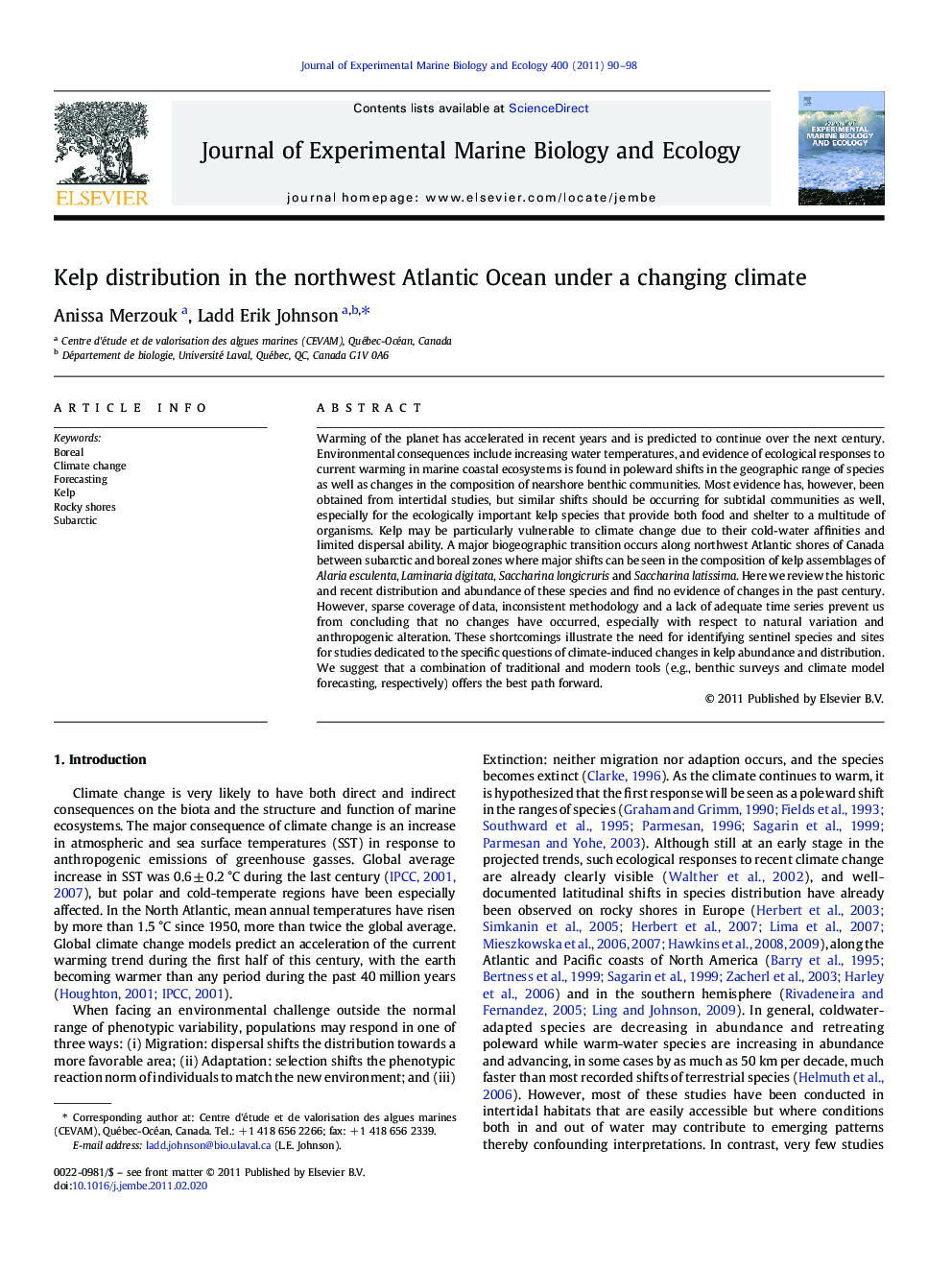| Article ID | Journal | Published Year | Pages | File Type |
|---|---|---|---|---|
| 4396338 | Journal of Experimental Marine Biology and Ecology | 2011 | 9 Pages |
Warming of the planet has accelerated in recent years and is predicted to continue over the next century. Environmental consequences include increasing water temperatures, and evidence of ecological responses to current warming in marine coastal ecosystems is found in poleward shifts in the geographic range of species as well as changes in the composition of nearshore benthic communities. Most evidence has, however, been obtained from intertidal studies, but similar shifts should be occurring for subtidal communities as well, especially for the ecologically important kelp species that provide both food and shelter to a multitude of organisms. Kelp may be particularly vulnerable to climate change due to their cold-water affinities and limited dispersal ability. A major biogeographic transition occurs along northwest Atlantic shores of Canada between subarctic and boreal zones where major shifts can be seen in the composition of kelp assemblages of Alaria esculenta, Laminaria digitata, Saccharina longicruris and Saccharina latissima. Here we review the historic and recent distribution and abundance of these species and find no evidence of changes in the past century. However, sparse coverage of data, inconsistent methodology and a lack of adequate time series prevent us from concluding that no changes have occurred, especially with respect to natural variation and anthropogenic alteration. These shortcomings illustrate the need for identifying sentinel species and sites for studies dedicated to the specific questions of climate-induced changes in kelp abundance and distribution. We suggest that a combination of traditional and modern tools (e.g., benthic surveys and climate model forecasting, respectively) offers the best path forward.
Research Highlights► We examined historic and recent distributions of kelp species in the NW Atlantic. ► No climate-related shifts in distribution or abundance were observed. ► Interpretation is difficult due to lack of comprehensive data in space or time. ► Dedicated sampling of key species in sentinel sites is needed to assess responses.
